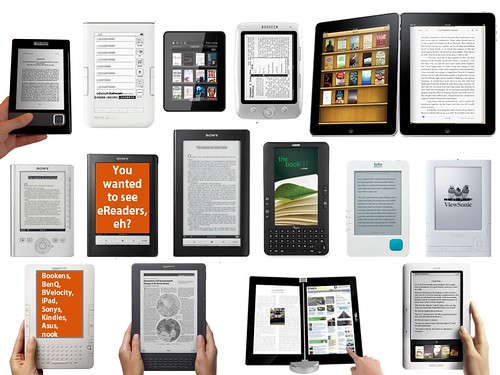- Ralph Waldo Emerson
While this still rings true, the advent and proliferation of e-readers has me wondering if a man is also known by how he reads. Recently, a friend of mine linked to this article on his facebook page. As an avid reader he was casting about for thoughts on ereaders as he ponders taking the plunge. While several of us worked hard to convince him of the merits of e-readership, it forced me to wonder about the state of e-readers in education, and the possible reasons e-readers aren't ready for prime time in K-12 education. I love my Kindle, and even taught a novel from it this past semester, but are e-readers ready for prime time in secondary schools?
1. K-12 textbooks are not readily available in an e-format
This is changing, seemingly by the minute. Math, science and history books are increasingly becoming available in digital formats. With movements like Virginia's "Beyond Textbooks" initiative, this problem is becoming moot. On the other hand, as an English educator who uses novels and Project Gutenberg in lieu of a textbook in an American Lit class, I want to see widespread availability across all disciplines before I start clamoring in administrative hallways.
2. We have that in the library, but not digitally...
Our school librarians were early adopters, as we have Kobo devices available for checkout, and a small but growing list of available e-texts for perusal. Nevertheless, after repeatedly hearing about how our library is "the heart" of our school, I wonder about the revolution that would need to occur to truly embrace an e-reader culture. Replacing analog with digital is inevitable, but will there be resistance? This also renders the Kindle, with its current lack of library support, a poor choice for students.
3. Annotated E-reading
This is the biggest issue for many of my colleagues. Whlie devices such as the Kindle have basic hilighting and note taking features, there is some concern about a drop in annotated reading. I see this as a short term problem, and one that may be solved by some simple paradigm shifts, the way Diigo has changed internet usage.
Verdict
Secondary education is ready for e-readers, and as soon as texts are easily available, e-readers will start to become the norm. Overweighted backpacks will become relics of a previous age. As Shelly-Blake Plock recently reflected about the iPad, educators could reap substantial benefits from more portable devices. I believe our students will have similar benefits...and they will be known by the books they e-read.

photo by libraryman
http://www.flickr.com/photos/libraryman/5052936803/
We are grappling with this too. I'm recommending that if a book exists in digital format, we allow students to use it in place of a paper copy starting this fall. We're a 1:1 laptop school already and at present, the iPad, Kindle, Nook,...all are welcome here - though I'm starting to swing toward the iPad as a companion device for our Middle and Upper Schools.
ReplyDeleteOur Art History teacher is going with the digital version of Gardner's Art History via CourseSmart, and like you I think our teachers could make use of the Gutenberg titles. Companies like Scroll Motion http://www.the-digital-reader.com/2010/11/16/scrollmotion-selected-to-develop-algebra-1-app-for-ipad/ and Inkling http://www.inkling.com/
I wonder if the rise in e-books warrants a shift in the way we teach students to read and interact with e-text starting with students in elementary school. It has come so far but still has a way to go before it can replace textbooks. Why so slow?